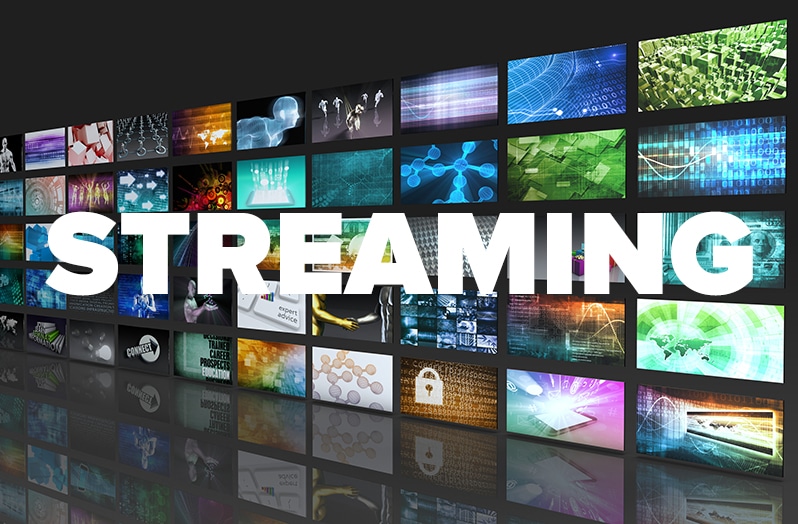Live streaming has become an integral part of the digital entertainment industry, evolving rapidly over the past few years. From esports tournaments to influencer broadcasts, the demand for high-quality, real-time streaming continues to grow. Modern viewers expect seamless experiences, crisp visuals, and interactive features that enhance engagement.
As the competition intensifies, platforms are constantly upgrading their technology to stay relevant. This article explores the most significant innovations shaping the future of live streaming. These trends not only transform how audiences consume content but also redefine how creators deliver it.
In addition, the shift towards mobile-first consumption means that technological advancements must prioritize accessibility and quality on a variety of devices. As 5G networks expand globally, even remote users now demand high-definition streaming with minimal delays.
AI-Driven Production and Automation
Artificial Intelligence (AI) has transformed the live streaming landscape. Advanced AI tools now handle tasks like automated camera switching, background removal, and even real-time captioning. These innovations reduce production costs while enhancing the overall quality of streams.
AI also powers recommendation algorithms, ensuring viewers receive content tailored to their interests. For example, esports broadcasters use AI to highlight crucial in-game moments, offering fans more dynamic viewing experiences. Additionally, AI-driven tools assist with automated language translation and sentiment analysis in chats, fostering more inclusive and globally accessible streams.
AI is also being deployed for predictive analytics, helping streamers anticipate viewer behavior, optimize streaming times, and improve retention rates. As AI models grow more sophisticated, they are also capable of detecting and filtering harmful content or spam in real-time, improving community health and safety during broadcasts.
Ultra-Low Latency Streaming

Latency is a critical factor for both broadcasters and viewers. Traditional streaming often suffers delays of several seconds, which can hinder real-time interaction. Modern streaming protocols like WebRTC and Low-Latency HLS have significantly reduced lag.
This is especially crucial in the esports scene, where viewers rely on instant updates to follow competitive matches. When discussing strategies for esports betting or cs2 picks, a few seconds can make a big difference in accuracy and relevance. Furthermore, ultra-low latency is essential for interactive formats like live auctions, gaming streams, and Q&A sessions, where seamless audience engagement is vital for a satisfying user experience.
As virtual events, webinars, and remote conferences become more common, ultra-low latency streaming is essential to mimic in-person interactions and maintain audience attention. Platforms that fail to adopt these improvements risk falling behind as users increasingly demand frictionless, real-time digital experiences that match face-to-face interactions.
Cloud-Based Streaming Solutions

Cloud technology is another major game-changer in the streaming world. Instead of relying on expensive hardware, creators can now produce and broadcast high-quality streams using cloud-based platforms.
These solutions offer scalability, allowing streamers to handle sudden viewer surges without compromising performance. Cloud encoding, storage, and distribution streamline workflows, making professional-grade broadcasting more accessible to independent creators and smaller organizations.
Additionally, cloud-based systems support remote collaboration, enabling teams from different parts of the world to manage, edit, and produce content simultaneously without physical constraints. The flexibility of the cloud also allows seamless integration with AI tools, automated backups, and multi-platform streaming, giving creators a significant edge in efficiency and content management.
As environmental concerns grow, many cloud providers are also shifting towards green data centers powered by renewable energy, making cloud streaming not only efficient but also more sustainable.
Interactive and Immersive Features
Interactivity is one of the main factors that differentiates live streaming from traditional media. Recent innovations include real-time polls, clickable overlays, integrated chat moderation powered by AI, and synchronized multi-camera views.
Immersive technologies like augmented reality (AR) and virtual reality (VR) are also being integrated into streams. AR graphics during esports matches, for example, enhance storytelling by displaying player stats, heat maps, and tactical information in real-time.
Furthermore, some platforms now offer spatial audio, giving audiences a more lifelike and engaging auditory experience, and allowing creators to craft highly personalized, immersive environments that captivate viewers. Emerging features like gamification—where audiences can participate in mini-games, quizzes, or earn rewards during a live stream—are further boosting engagement levels and viewer loyalty.
Additionally, integrations with social media allow viewers to share moments instantly, expanding the reach of streams beyond their original platforms and creating viral moments in real time.
Blockchain and NFT Integration in Streaming
Blockchain technology is making its way into the live streaming space, offering new revenue models and enhancing transparency. Content creators can tokenize their work, offering NFTs for exclusive access, behind-the-scenes content, or virtual merchandise.
Moreover, blockchain-based tipping systems and smart contracts ensure instant, secure transactions between viewers and creators. This fosters stronger community connections and diversifies monetization opportunities. Additionally, blockchain enhances copyright protection by securely recording ownership and usage rights, helping creators maintain control over their intellectual property in an increasingly decentralized streaming environment.
Some platforms are also experimenting with decentralized storage solutions powered by blockchain, which can improve content security and reduce reliance on centralized servers prone to outages or censorship. As the metaverse continues to develop, blockchain-enabled assets like NFTs may play an integral role in virtual event tickets, fan experiences, and digital memorabilia directly tied to live streams.
Conclusion
The future of live streaming is being shaped by rapid technological advancements that enhance both production quality and viewer engagement. From AI-driven automation and ultra-low latency to blockchain-based monetization, these innovations are redefining how we experience live content.
For esports enthusiasts, streamers, and content creators, staying informed about these developments is essential to remain competitive and deliver top-tier experiences. As technology continues to evolve, the boundaries of what’s possible in live streaming will only expand further. Whether you’re an avid viewer or an aspiring creator, embracing these advancements will be key to thriving in this fast-paced digital landscape.
Those who adapt quickly will be best positioned to capitalize on the evolving opportunities in the world of live content creation and consumption. Ultimately, the fusion of these technologies will lead to a future where live streaming is more immersive, interactive, and rewarding than ever before—for both creators and audiences alike.


















